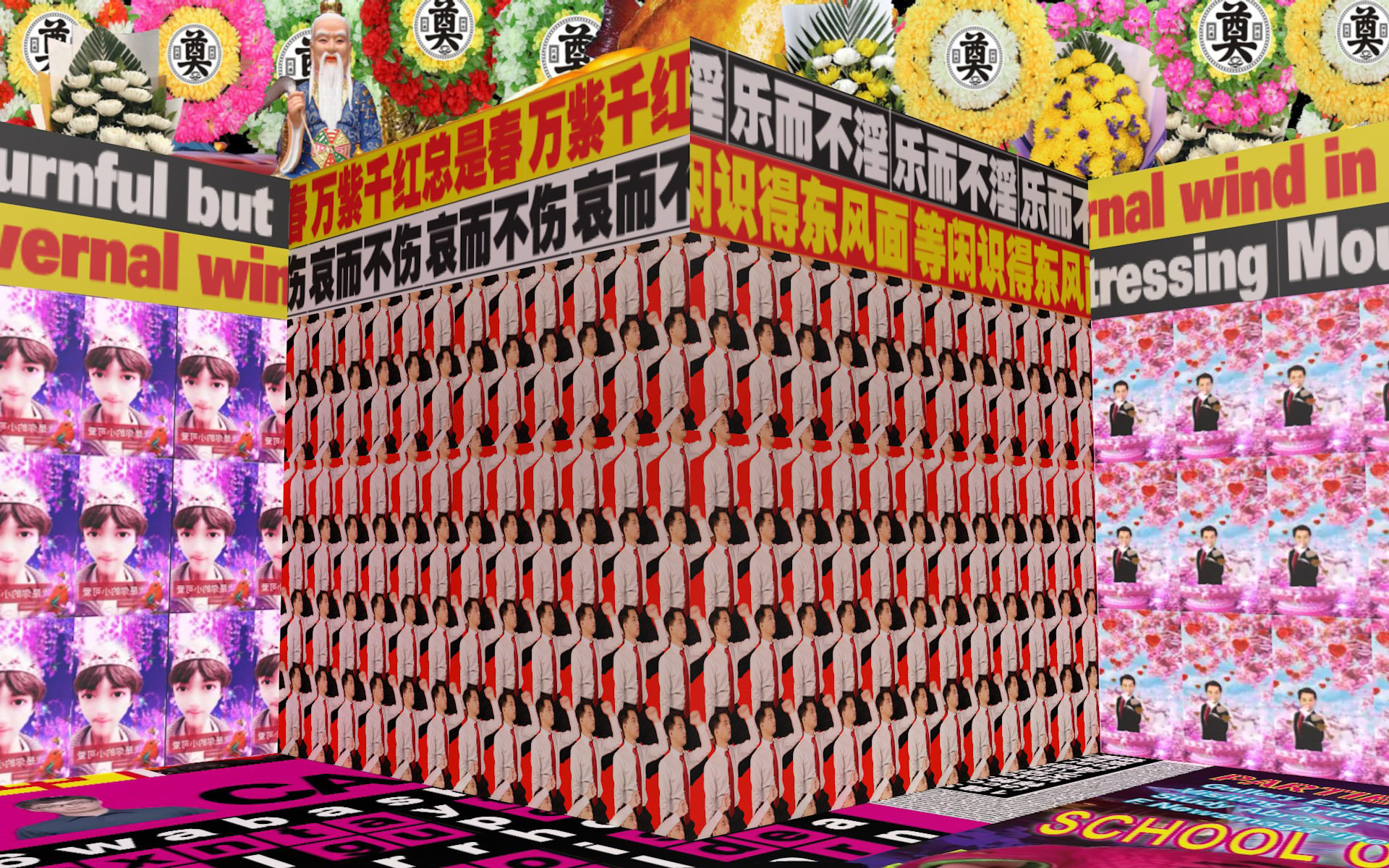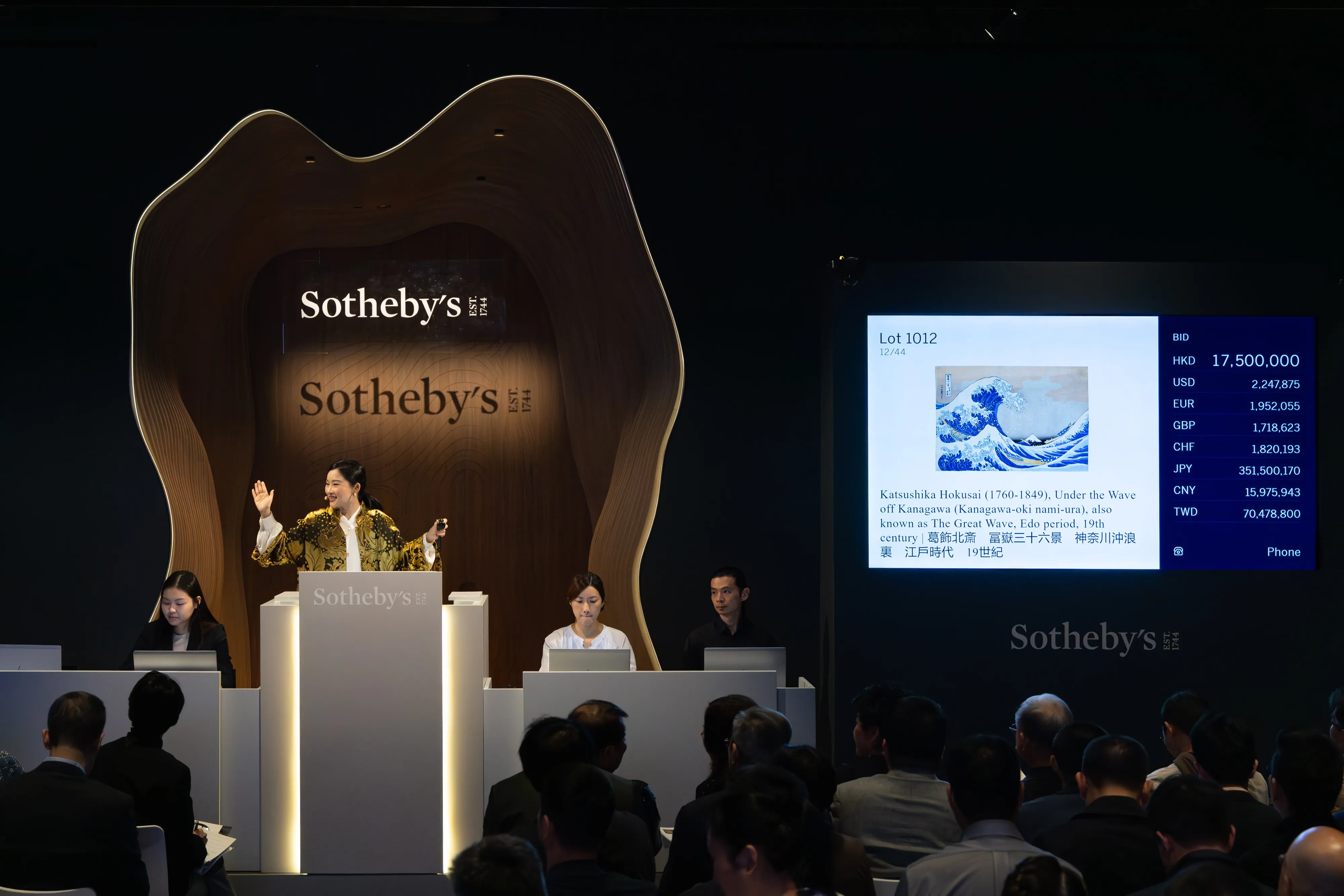Ye Funa readily admits that she is addicted to the internet.
Born in Kunming in Yunnan province in southwest China, Ye came of age as the internet was booming. While her early works revolved around research into history and texts, she has become one of the foremost documenters of online culture in China, as she researches and subsequently packages internet subcultures and trends through a variety of mediums, online and offline.
Speaking about her love of all things online, the artist says, “I am addicted to the internet and the digital world, and I think the best things in my life are all discovered online, including the people I know and things I see.”
In her work, she brings to life fringe subcultures that occupy small corners of the internet. “I get my inspiration from watching short videos and visiting people in villages. They are very creative, and live on the fringes of cities, showing the vernacular culture and the creativity that is entailed in these people making the best of their life.”
One of the topics that has sparked her imagination recently is the shamate movement, a subculture that is identified by its outlandish fashion sense, makeup and hairstyles among marginalized and often poor rural youth. Ye organized a beauty parlor pop-up as part of Gallery Weekend Beijing 2021, alongside the “Father of Shamate” Luo Fuxing. It was one of the most popular shows at this year’s event.
Related:
 4 Key Takeaways from Gallery Weekend Beijing 2021Gallery Weekend Beijing 2021 returned with an extensive city-wide program, inviting international galleries and staging excellent showsArticle May 05, 2021
4 Key Takeaways from Gallery Weekend Beijing 2021Gallery Weekend Beijing 2021 returned with an extensive city-wide program, inviting international galleries and staging excellent showsArticle May 05, 2021
Speaking to her interest in shamate, she says, “I wanted to be a shamate when I was little, or, to put it more precisely, I was scared of shamate because I thought they were so cool and tough. I never thought I could be one of them.”
The way by which she regained interest in the movement is highly coincidental. She watched a recent documentary, called We Were Smart by director Li Yifan, when it was shown at the university where she works. Around the same time, a friend of hers went to Shipai Village in Dongguan, a major city in Guangdong province in South China, to live with members of the shamate subculture. She reached out to both Li and her friend, who introduced her to Luo Fuxing.
“He is now not only a shamate, but also an artist in a sense, or, he considers himself an artist, which is very interesting,” she tells us about her impressions of Luo. “In his previous projects he appeared as a model, or a performer, but now we are collaborating as artists.”
Related:
 Shunned, Shattered, Shamate: Telling the Story of China’s Most Hated SubcultureDocumentary “We Were Smart” sheds light on the shunned subculture shamate and China’s urban-rural gulfArticle Dec 24, 2020
Shunned, Shattered, Shamate: Telling the Story of China’s Most Hated SubcultureDocumentary “We Were Smart” sheds light on the shunned subculture shamate and China’s urban-rural gulfArticle Dec 24, 2020
The Smart Gallery is part of her long-running project, Exhibitionist, which brings to life daily actions like nail art or hair styling, in an effort to show how we are living in an age of exhibitionism. Giving some insight into what the project is, she tells us, “I think I’m turning myself into an art institution through Exhibitionist. We are constantly exposing ourselves in modern social life, we are doing exhibitions non-stop,” she says, speaking to how everyday life online has become an act of exposition for so many people, before adding, “We are always taking selfies, always showing ourselves on social media, and dressing up in peculiar ways. This to me is a way of curating, a way of artistic expression, without us realizing it is an art. What I want to do is to blur the line between everyday aesthetics and so-called elegant aesthetics.”
The earliest component of her Exhibitionist project was Curated Nails, which she founded in 2014. She began crowdsourcing imagery for the project soon after, and quickly compiled a library of nail art. The project then morphed into a variety of different things, with Ye creating installations around nail art, as well as setting up a variety of pop-up nail art salons.
The similarities with The Smart Gallery are easy to see: both are ethnographic studies of subcultures that live online through social media pictures, and each project involves public beauty parlors that invite audience interaction and leave people with a temporary piece of art that will eventually wash away.
The melding of these aspects, physical art, audience interaction and an in-depth exploration of internet subcultures and exhibitionism makes for expositions that are fun, funky and meaningful, and which are also, significantly, temporary.
This idea of temporariness is something that is captured again and again in her work, whether by accident or by design. It is also an idea that is wrapped up tight with contemporary life, when cultures come and go at a rapid pace. Ye has captured the idea in her One Second Film Festival, for which she crowdsourced one second-long films over the course of 2017, in collaboration with K11 Art Foundation.
Speaking to why she chose to curate a festival around such short films reveals something about her own approach to the pace of change.
“Ten second videos are too long for me. When I use TikTok, I cannot wait to swipe for the next video,” she tells us, going on to say, “Now our attention is consumed by new things rapidly.” Her preoccupation with ultra fast forms of visual communication, seems intertwined with her preoccupation with documenting the way in which Chinese society is changing. The medium fits the society in which we are living.
She sums this up, as she says, “I am interested in the rapid changes happening in society. They create interesting cultures, but these cultures also go away quickly. China is good at manufacturing things at a large scale, before hiding them equally well. This process of brutal growth is fascinating to me.”
Additional reporting by Siyuan Meng
















